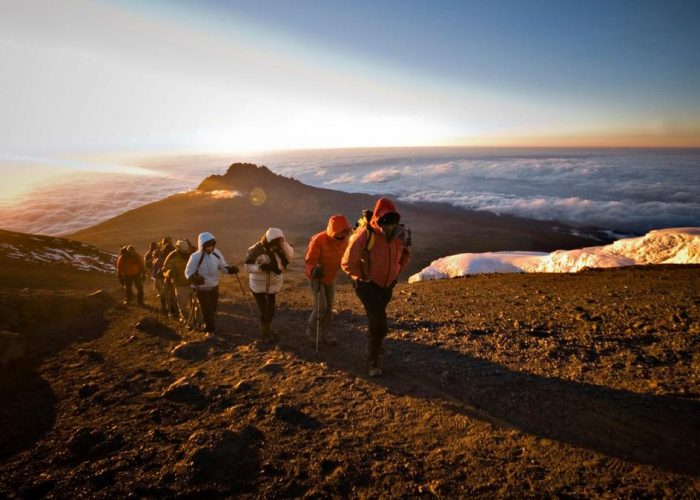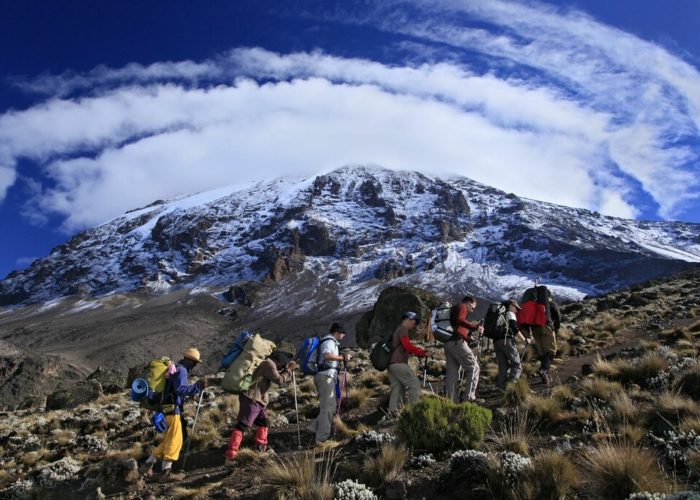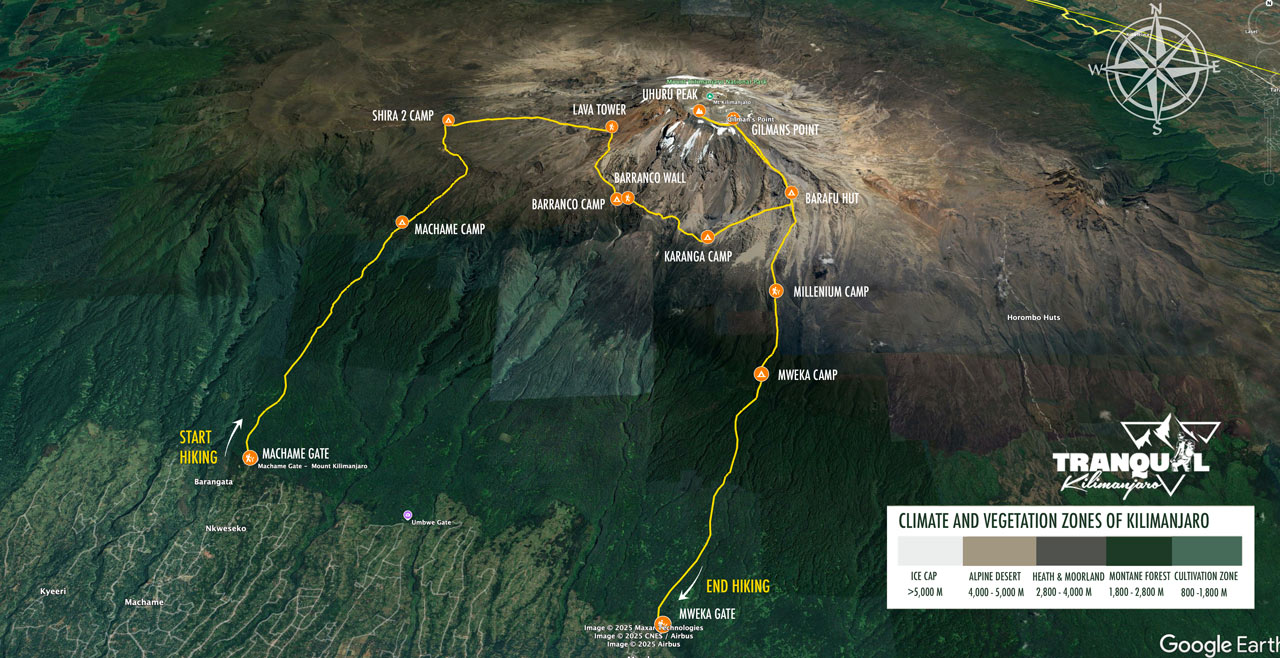Machame 7 and 6 days, what is the difference?
Machame can be completed in either 6 or 7 days, but the major distinction between the 6-day and 7-day itineraries is the inclusion of an extra day in the 7-day schedule, specifically at Karanga Camp, which is positioned between Barranco Camp and Barafu Camp, which affects the difficulty and success rate..
6-Day Itinerary: Skips an extra rest day, going directly from Barranco Camp to Barafu Camp, leading to longer hiking days and less time to adjust to high altitudes. 7-Day Itinerary: Includes an additional day at Karanga Camp, allowing for better acclimatisation before the summit attempt, making it less strenuous.
The 7-day route variation has a summit success rate of 93.1% for Uhuru Peak, compared to 87.3% for the 6-day route, highlighting the benefit of the extra day.
The 6-day itinerary, by skipping Karanga Camp, requires trekkers to cover significant altitude gains in a shorter time, which can lead to increased fatigue and a higher risk of altitude-related issues. This makes it more suitable for experienced trekkers or those with prior high-altitude exposure
Where will I sleep along the Machame Route?
Normally, climbers using the Machame Route sleep in tents at several camps. Starting from Machame Gate (2,100m), the first night is spent at Machame Camp (2,820m), followed by Shira Camp 2 (3,850m) on the second night. The third night is at Barranco Camp (3,900m), and on a 7-day itinerary, the fourth night might be at Karanga Camp (3,960m) for additional acclimatisation. The fifth night is at Barafu Base Camp (4,670m), the base for the summit attempt via Stella Point (5,739m). After summiting, climbers descend and may spend a night at either Millennium Camp (3,820m) or Mweka Camp (3,100m) before exiting through Mweka Gate (1,640m). How many climbers sleep in one tent? All accommodations are in durable, 4 season tents, typically shared by two climbers, with sleeping mats provided.
What will I eat when trekking Machame?
Guided climbs on Machame typically include full board, with professional cooks preparing three hot meals a day, plus snacks and beverages. The food is designed to provide the necessary energy and nutrients for high-altitude trekking, with menus planned to balance carbohydrates, proteins, and fats. Climbers are advised to inform us of dietary restrictions in advance, as we can accommodate vegetarian and vegan diets. Fore more information see our sample meal plan and menu here.
Breakfast
Expect a hearty breakfast to fuel your day, typically including porridge with milk, boiled or fried eggs, bread or toast with spreads like butter, jam, or peanut butter, and fresh fruit like bananas or oranges. Hot beverages such as tea, coffee, or hot chocolate are also provided.
Lunch
Lunch is often a mix of portable and nutritious options, such as sandwiches with fillings like meat, cheese, or egg, fresh fruit, sliced vegetables, and sometimes macaroni with meat sauce. On some treks, a hot lunch may be prepared at a designated stop.
Dinner
Dinner is a hot, filling meal to replenish energy, usually consisting of stews or curries with meat, rice or pasta, grilled meats, and vegetables. Bread or chapati may accompany the meal.
Energy Snacks
Throughout the day, expect snacks like nuts (e.g., peanuts, almonds), dried fruits (e.g., apricots, raisins), chocolate bars, cookies, popcorn, and energy bars to maintain energy during hikes.
Vegetarian and Vegan Diets
We can accommodate and prepare vegetarian and vegan diets if informed in advance. Vegetarians might enjoy tofu scramble, cheese sandwiches, and lentil curries, while vegans can expect plant-based meals like hummus wraps, vegan chilli, and overnight oats with plant-based milk. For more information about vegetarian diets, please see here.


























